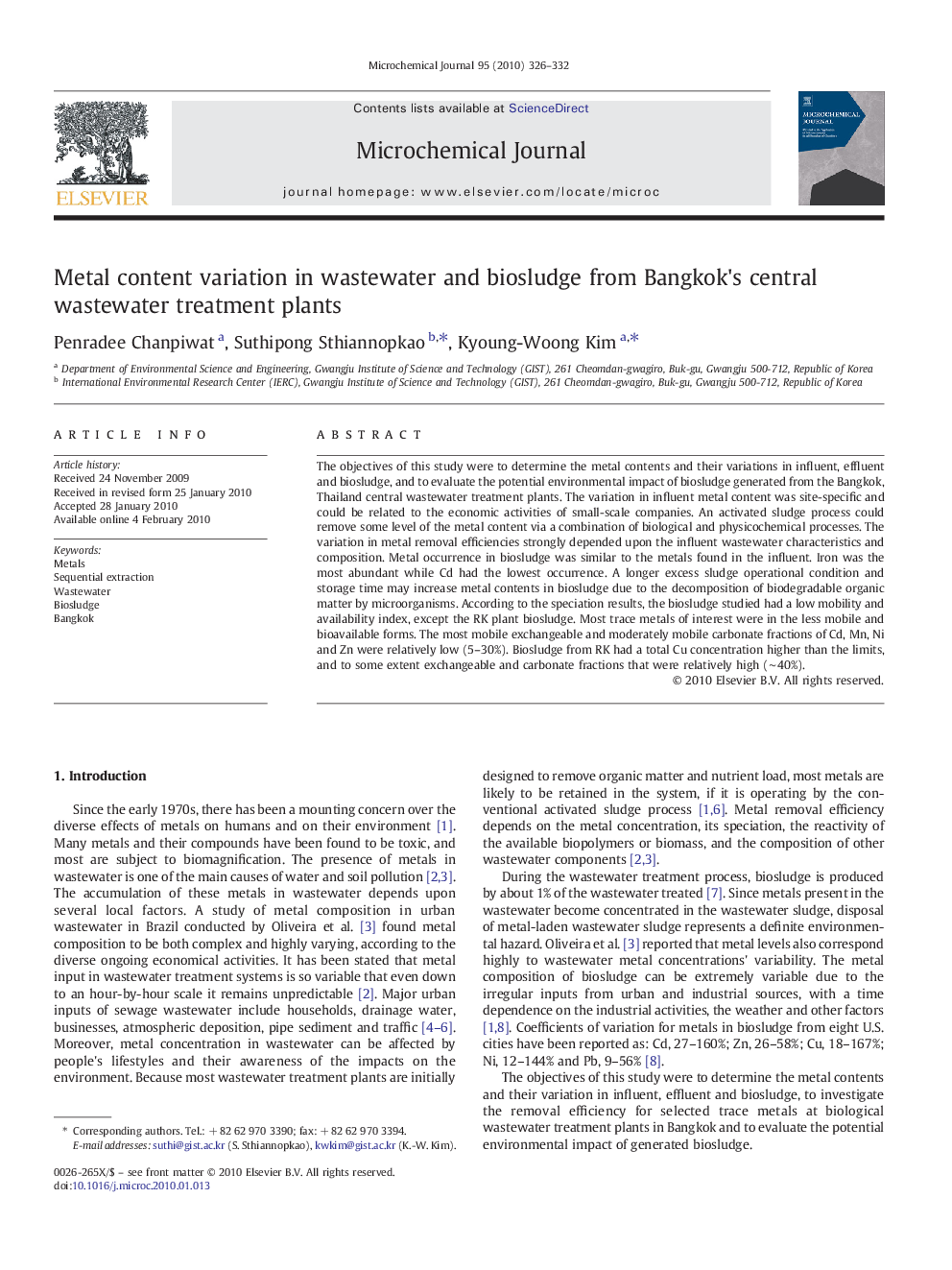| Article ID | Journal | Published Year | Pages | File Type |
|---|---|---|---|---|
| 1227989 | Microchemical Journal | 2010 | 7 Pages |
The objectives of this study were to determine the metal contents and their variations in influent, effluent and biosludge, and to evaluate the potential environmental impact of biosludge generated from the Bangkok, Thailand central wastewater treatment plants. The variation in influent metal content was site-specific and could be related to the economic activities of small-scale companies. An activated sludge process could remove some level of the metal content via a combination of biological and physicochemical processes. The variation in metal removal efficiencies strongly depended upon the influent wastewater characteristics and composition. Metal occurrence in biosludge was similar to the metals found in the influent. Iron was the most abundant while Cd had the lowest occurrence. A longer excess sludge operational condition and storage time may increase metal contents in biosludge due to the decomposition of biodegradable organic matter by microorganisms. According to the speciation results, the biosludge studied had a low mobility and availability index, except the RK plant biosludge. Most trace metals of interest were in the less mobile and bioavailable forms. The most mobile exchangeable and moderately mobile carbonate fractions of Cd, Mn, Ni and Zn were relatively low (5–30%). Biosludge from RK had a total Cu concentration higher than the limits, and to some extent exchangeable and carbonate fractions that were relatively high (∼ 40%).
